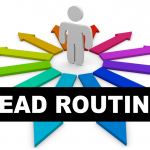- Like
- SHARE
- Digg
- Del
- Tumblr
- VKontakte
- Flattr
- Buffer
- Love This
- Save
- Odnoklassniki
- Meneame
- Blogger
- Amazon
- Yahoo Mail
- Gmail
- AOL
- Newsvine
- HackerNews
- Evernote
- MySpace
- Mail.ru
- Viadeo
- Line
- Comments
- Yummly
- SMS
- Viber
- Telegram
- JOIN
- Skype
- Facebook Messenger
- Kakao
- LiveJournal
- Yammer
- Edgar
- Fintel
- Mix
- Instapaper
- Copy Link
Given that peer recommendations are among the most trusted sources of information about a business, positive reviews from existing customers can quickly turn into genuine inquiries from potential new clients. Happy customers can multiply your revenue base since each satisfied client might recommend your services to dozens of their peers. You can activate word-of-mouth recommendations by turning customers into advocates, and display their advocacy through case studies published on your website, reference calls, or testimonials from clients included in webinars. Customers who become advocates stimulate enterprise growth and drive value.
The Impact of Turning Customers Into Advocates
B2B buyers have a complex and formal buying process, involving multiple people across departments. Each of these people might have different goals, which is why strong customer relationships and leveraging Voice of Customer information to create customer advocacy is critical. Research has shown that 8 out of 10 decision-makers look outside the buying committee for guidance on products they are considering. B2B 3rd party review sites have become a trusted source of information for buyers, as potential buyers trust peer reviews from people they feel aren’t being paid to represent the interests of a company. Potential clients want to see data and reviews that prove people are loyal to the brand of software they are considering.
Client testimonies are seen as authentic representations of the advantages and disadvantages of a product. The word-of-mouth chain of influence has the ability to significantly aid sales if you can properly leverage successful customer experiences within your portfolio.
So, how do you spot your potential advocates? You find these customers by tracking customer data.
Spot the Potential Advocate
To spot potential advocates, it is critical to capture a comprehensive customer health score to identify how your customers are doing. Use surveys like NPS to help gather customer sentiment. For example, by using NPS, you will be able to see which customers have high scores and are ready to become advocates, as well as those customers who will need more engagement and attention before becoming advocates. CS teams should focus on both types of customers equally, as both are important in your quest for customer advocacy. To turn these private customer stories into public endorsements, you should implement the following customer success best practices:
- Accelerate Onboarding
- Establish, Track, and Celebrate Goals
- Create Delight and Continuously Deliver Value
- Go Above and Beyond in Response to Challenges
- Build a Customer Community
- Gather Customer Sentiment Regularly
- Personalize Communications
Following these steps will ensure happy customers, and therefore, more advocates. Here’s a closer look at each step:
1. Accelerate Onboarding
The key to getting your customers excited about using your product is accelerating their ability to do so independently. Customer success onboarding focuses on getting the customer to incorporate the product into their daily workflow as rapidly as possible. By building data-driven, goal-focused points of engagement throughout onboarding, you can ensure the customer builds a steady understanding of your product and begins to link its use with practical real-world success as early as possible.
Onboarding is the gap between promise and delivery. You want to reduce that gap as much as you can.
2. Establish, Track, and Celebrate Goals
Customers always want to hear good news and see positive results. Working together to establish product goals at the beginning of a customer journey lets you define what success looks like to your customer. It is important to co-create a plan with your customer and revisit this plan regularly to monitor progress towards specific goals. This allows you to easily identify customers who are off track, enabling you to set aside time to work with the customer to get them back on track. Customers will recognize that their CSM is working hard to ensure they progress towards their goals, helping them see the earliest signs of value and how even incremental progress adds up to long-term growth.
Celebrating the achievement of these goals generates momentum and gives the customer a ready-made sound bite they can brag about to their peers.
3. Create Delight and Continuously Deliver Value
You should continuously deliver value and delight to your customers. It is important that this delivery includes an ongoing effort to understand the customer’s needs and maximize your product to fit those needs. Additionally, your product knowledge, behavior tracking, and customer success metrics should allow you to anticipate and service future customer needs before they arise. As a customer is approaching the next milestone in their journey, you can have features, advice, early access to advanced services, and even subscription incentives ready to take them to an even higher achievement they had not yet considered.
4. Go Above and Beyond in Response to Challenges
Every customer faces adversity in their product journey, but escalations can be a chance to prove the value of your service. Customers who feel their voice has been heard and their requests acted upon in a timely manner are likely to remain loyal to their provider.
To be heard is to be respected, and customers who are kept updated on the timeframe and process involved in solving their challenge may be less likely to feel a loss of momentum, even if their product use is impacted.
5. Build a Customer Community
When your customer success efforts deliver customer satisfaction, they need a platform to shout it to their peers. When you turn the spotlight onto your customers and make them look successful, they will most likely give you positive feedback. Allowing customers to participate in webinars or share their success stories on stage helps you further create that positive word-of-mouth channel to attract other potential customers.
Building a digital community of like-minded customers through message boards, social media spaces, cyber and real-world events, and discussions based around your own online presence can also help customers engage in conversations about their industry, related business issues, and of course, you.
In a marketing sense, you get to create both the conditions for a positive peer review and the means to deliver it. What is more, if the community is built around a genuine shared interest, then the people receiving the feel-good reports are suitable to also take advantage of your product.
6. Gather Customer Sentiment Regularly
If you don’t know what your customer is experiencing, you cannot properly help them. Therefore, it is vital that you regularly gather and analyze feedback from customers through support ticket trends and VoC information. This data can guide updates and iterations to your products and services and help you properly engage with customers.
Regularly analyzing customer data will empower you to understand where your customer is at and what they need—allowing you to automate responses based on customer metrics, goals, and the ever-changing customer health score to ensure messages to customers are timely and of value.
7. Personalize All Communications
Based on product and usage data, you can personalize customer communication to make sure the right message is sent at the right time. Is a customer not logging in enough? Perhaps they need more training on how to use the product. Is a customer not using a certain feature? Send them a tutorial video on the benefits of the feature. Have they recently filled out a customer survey? You should have a plan for your detractors, passives, and promoters. It is vital to close the feedback loop for all of your customer responses and make sure you have personalized the follow-up with next steps.
Customers Are the Best Advocates
The digital transformation of business has placed customers firmly in the driver’s seat. The resulting low-risk, highly personalized SaaS model gives them the freedom to pursue immediate results, or move on to the next provider. Positive peer reviews offer prospective customers proof that your enterprise can be trusted to deliver the kind of customer-centric service that produces results.
Provided your efforts are backed by the precision detail and goal-based prompts of a quality customer success platform, you will be able to turn each peer-review inspired customer into advocates for your business.
Totango’s easy to use platform gives you the power to scale your customer success efforts without losing sensitivity. In these challenging times, you can’t afford to buy before you try. Get started for free today.



